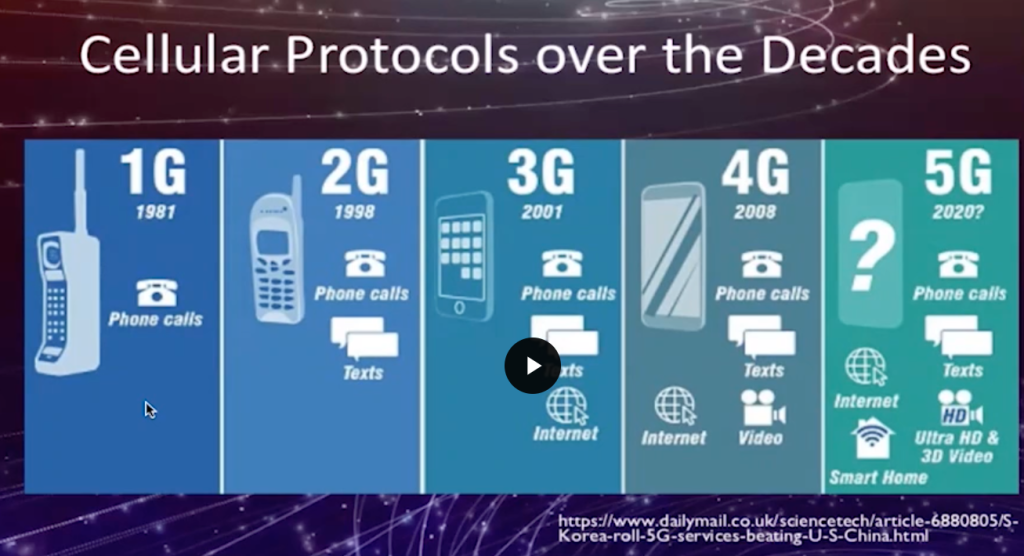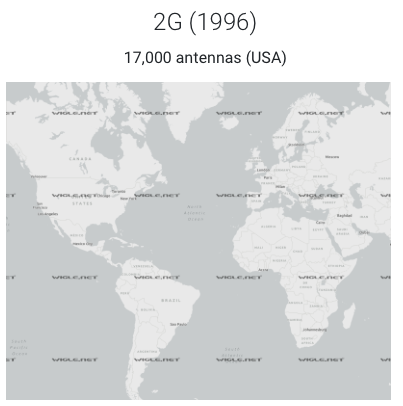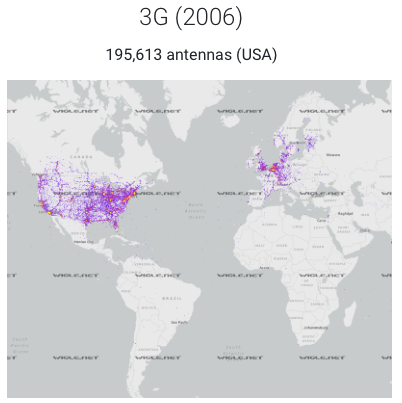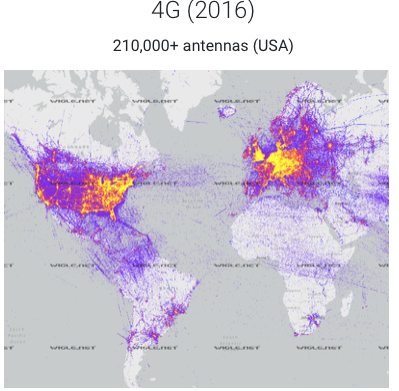We are bombarded with advertisements, almost daily now, about the pending rollout of cell phone’s newest iteration of service, commonly referred to as 5G or Fifth Generation. Its proponents promise lightning fast speeds for video and data (but really, what’s wrong with our current speeds?), and its disciples hark the promises of a new age of driverless cars and the seamless integration of a cornucopia of home-based electronic gadgets and appliances which we increasingly and affectionately lump under one umbrella and label as the “Internet of Things” or even more colloquially, “The Smart Home” .
When not working as a retail clerk in a well known vitamin/ supplement department for a local Chicago grocery store, I also work as a real estate agent. And I can tell you first-hand that many of my fellow agent’s clients in my office are thinking about “smart home” technologies in their next home, if not asking for them directly. According to at least one survey (Coldwell Banker’s (Blue Matter blog, August 10, 2016), 44% of move-in ready buyers are asking for smart home technology, and that number is most assuredly higher today, almost five years later post COVID.
And yet, despite its many proponents and the increasing demand for these “smart home” features, there is a growing group of physicians and scientists who study these matters and after years of thorough and exhaustive research, declare that the science is settled–wireless technologies are quite literally making us sick.
Consider the following:
- The U.S. Toxicology Program and Italy’s Ramazzini Institute have both published large studies in the last three years concluding the microwave radiofrequency radiation used to send signal in wireless systems causes tumors (cancer) and DNA damage (see the science here);
- Lloyds of London and other major insurers explicitly exclude coverage for any claims for wi-fi related illness (Principia Scientific International, Feb 12, 2019). Lloyd’s internal Risk Assessment Team compares wireless technologies with asbestos [Emphasis mine] in that the early research on asbestos was “inconclusive” and only later was it conclusively shown that asbestos causes cancer;
- While appearing before Congress in 2019, representatives from the telecom industry say they have no studies that show 5G is safe and have no plans to conduct such studies;
- French law prohibits wireless internet in pre-schools and daycare facilities and stipulates that wireless access must be disabled in elementary schools when not in use for teaching [Emphasis mine] and
- Many Silicon Valley parents are raising their kids tech-free. The late Steve Jobs, founder of Apple, was a low-tech parent. (Business Insider, Chris Weller, Feb 18, 2018 and New York Times, Nick Bilton, Sept 10, 2014)
More about the Science in upcoming blog posts. In the meantime, this is a topic of supreme interest to me precisely because I am a Realtor™. Many people are surprised to find out that real estate agents are one of the few professions to have a dedicated code of ethics. It is something that the real estate profession takes very seriously with repeated trainings for new and experienced agents alike. In fact every person when they start in real estate pledges to uphold the National Association of Realtors Code of Ethics—a code whose Preamble, first established in 1924 and virtually unchanged almost 100 years later—reads like this:
“Under all is the land. Upon its wise utilization and widely allocated ownership depend the survival and growth of free institutions and of our civilization. REALTORS® should recognize that the interests of the nation and its citizens require the highest and best use of the land and the widest distribution of land ownership. They require the creation of adequate housing, the building of functioning cities, the development of productive industries and farms, and the preservation of a healthful environment.” [Emphasis mine].
No one can ever accuse Realtors of making small plans!!!! I am proud to be a Realtor™ precisely because of this clause and my profession’s decades long commitment to it.
The last portion of the Preamble which I highlighted above is rarely discussed or talked about in real estate circles, primarily I think, because we do not have to—it goes without saying and is clearly something that we in the real estate profession have taken to heart. For example, when you are shopping for a home there are typically separate disclosures for mold and radon. Our Illinois Residential Real Property Disclosure Report asks Sellers to disclose any unsafe concentrations of toxins like asbestos or unsafe conditions in drinking water. Moreover, we require that Sellers disclose known information on any lead-based paints on their property, and we mandate warnings be given to consumers on the same.
As an example, here is language direct from a 13-page informational pamphlet published by the Environmental Protection Agency that Sellers must provide to Buyers in the state of Illinois: “FACT: Lead exposure can harm young children and babies even before they are born.” (from EPA pamphlet Protect Your Family From Lead In Your Home, June 2003, p.1)
So as the Science is increasingly tells us that many electromagnetic fields are ultimately detrimental to our health, I believe it is time for a new mandated Real Estate Disclosure that comes with every home purchase. That is, a Disclosure that asks Sellers to disclose if they know of any electromagnetic fields within and around their home that exceed certain specified guidelines, or at least offer buyers the chance to do their own risk assessment, to perform their own EMF inspection, or waive the opportunity to do so. Just like the procedures my profession follows to inform and educate consumers about the dangers of lead paint, this disclosure should be accompanied by a pamphlet that outlines what EMFs are, what biological health effects science says they can have, and what prospective homeowners can do to reduce or mitigate their exposure.
If you agree with that (or even if you don’t!) let me know. We’re just beginning to peel away the onion here. There is so much more to this topic that far exceed the boundaries of this one post or even a series of posts. I promise that I will be expanding the conversation in the days and weeks and months ahead.





